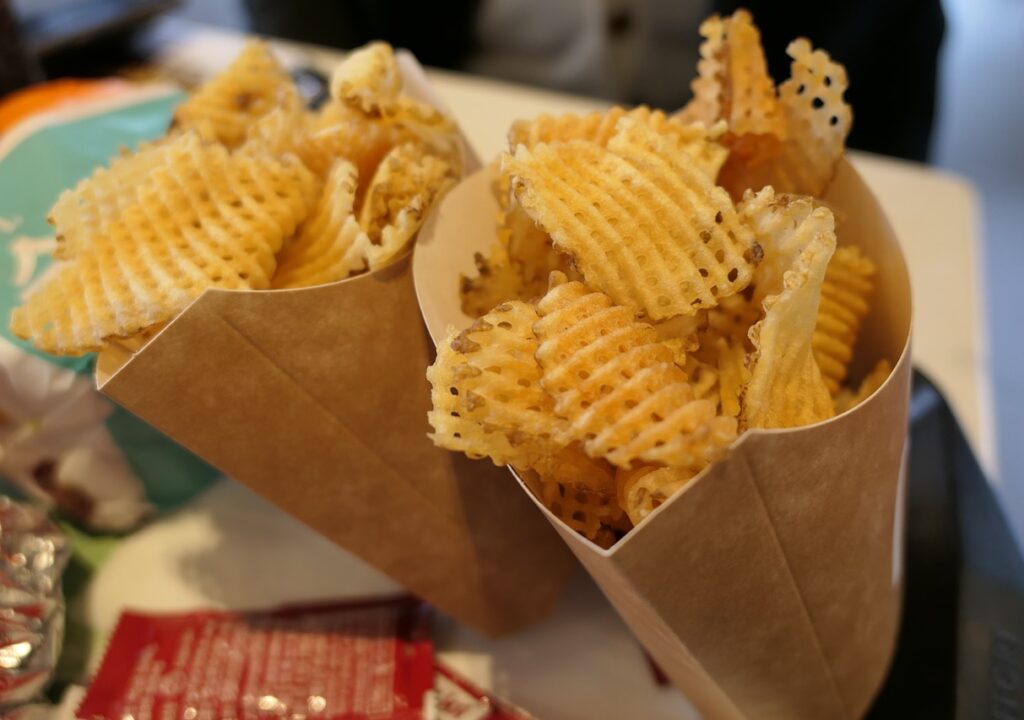
Food is vital for us all. Without food, we cannot survive. However, food ingredients and food types are essential for our well-being. Digitalisation has an important role even in areas concerning food and nutrition. This discussion highlights the critical balance between embracing technological advancements and maintaining health-centric eating practices, reflecting a broad spectrum of perspectives and personal choices in our diets.
Author: Johanna Heinonen
Understanding 3D Food Printing
The era of fast food, with its emphasis on quick and convenient meals, could be on the verge of a transformation with the advent of the novel 3D food printing technologies. This cutting-edge method involves the step-by-step creation of popular snacks and delicacies using a variety of pre-mixed powders, flavourings, binding agents, and oils. For instance, specialised franchise restaurants like Food Ink are already offering a wide range of printed meals. However, the introduction of synthetic foods has sparked a heated debate, particularly on social media, where influencers and nutrition experts often discuss the potential drawbacks of artificial food and advocate for organic alternatives.
3D printing technology is revolutionising the food industry, offering exciting possibilities for unprecedented customisation, waste reduction, and resource optimisation. This technology creates unique shapes and textures efficiently and at scale, addressing environmental concerns through ’just-in-time’ production and the use of alternative and recycled ingredients, promoting a more sustainable future.
While 3D food printing is a game-changer in the production of functional foods, it’s essential to acknowledge its challenges. Issues such as food safety, scalability of production, and cost are significant hurdles that need to be overcome for widespread adoption. By being aware of these challenges, we can work towards solutions that ensure the benefits of this technology are realised without compromising on safety or quality.
Recent showcases, like the one by Cocuus, highlight the potential of combining 3D printing with advanced design algorithms and nutritional analysis to produce foods that are both aesthetically pleasing and nutritionally beneficial (Cocuus 2022). As 3D food printing develops, it is poised to fundamentally change global food production and consumption, emphasising customisation, sustainability, and nutritional innovation. Despite these innovations, there’s a growing public discourse about the implications of synthetic foods. Influencers on platforms like Instagram and YouTube often raise concerns about the long-term health impacts of consuming food made from processed powders and oils. These discussions emphasise the importance of understanding what we consume and encourage a shift towards more natural, organic food choices.
Personal Experiences and Choices
Exploration into synthetic substances reveals potential harms, leading to conscious dietary decisions. While there is occasional reliance on pre-prepared meals for convenience, there is a significant effort to prioritise home-cooked meals wherever possible, based on the understanding that processed foods carry potential health risks which are best avoided. (Milterer-Daltoe et al. 2020.)
Monitoring energy levels has highlighted the stark contrast between the effects of fast food and home-cooked meals. Fast food consumption typically results in feelings of lethargy and sluggishness, which can negatively impact sports performance and other productive activities. This perspective is possibly influenced by early life experiences where fast food and sweets consumption was discouraged before engaging in physical activities like soccer, underscoring the immediate negative impact on physical performance. (Wolfson et al. 2022.)
Nourishing Innovations for LAB
There is a recognition of the potential impact of 3D-printed food on future food production and dietary habits, though there remains a degree of scepticism about fully adopting this technology. It is anticipated that 3D food printing will alter dietary choices and methods of food consumption. Still, there is hope that traditional food options, such as real meat and vegetables, will continue to be available, particularly as current generations age.
At the forefront of educational innovation, LAB University of Applied Sciences has the unique opportunity to harness the transformative potential of 3D food printing technologies. This shift in food production technology paves the way for advanced academic programs and revolutionises the campus dining experience, reflecting a modern approach to education and everyday campus life.
LAB can enrich its curriculum by embedding the principles and applications of 3D food printing within its courses. This would enhance the cooperation between ICT, technology, health and hospitality education programmes. Students could explore everything from the technological fundamentals to complex topics involving food safety, nutrition, and sustainability. This educational enhancement would prepare students for emerging roles in the food industry while fostering a culture of innovation. Furthermore, establishing a research centre dedicated to 3D food printing would encourage tackling industry-specific challenges such as scalability and using unconventional ingredients. Such an initiative could thrive through partnerships with technology companies and other academic institutions, facilitating shared knowledge and practical advancements.
On the operational side, the adoption of 3D food printing in campus dining services could serve as a model for sustainable meal preparation, minimising waste and optimising the use of resources. This approach allows meals tailored to individual dietary needs and preferences, increasing student satisfaction and aligning with environmental goals. Additionally, integrating this technology into health and wellness programs could lead to the development of customised functional foods to enhance nutrition and support diverse dietary requirements among the university community.
LAB can also extend its impact beyond the campus by engaging the broader community through workshops and seminars on the benefits and implications of 3D food printing. Such initiatives would strengthen LAB’s RDI and position the university as a thought leader in food technology. Furthermore, by participating in policy development, LAB University could influence regulations surrounding 3D food printing, ensuring food safety and fostering sector-wide innovation.
References
Cocuus. 2022. Cocuus webpages. Cited 10.5.2024. Available at https://cocuus.com/en/
Mitterer-Daltoe, M., Bordim, J., Lise, C., Breda, L., Casagrande, M., & Lima, V. 2020. Consumer awareness of food antioxidants. Synthetic vs. Natural. Food Science and Technology. 41, 208-212. Cited 10.5.2024. Available at https://doi.org/10.1590/fst.15120
Wolfson, J. A., Willits-Smith, A. M., Leung, C. W., Heller, M. C., & Rose, D. 2022. Cooking at home, fast food, meat consumption, and dietary carbon footprint among US adults. International journal of environmental research and public health. 19(2), 853. Cited 10.5.2024. Available at https://doi.org/10.3390/ijerph19020853
Author
Johanna Heinonen is a Senior Lecturer at LAB University of Applied Sciences. She is particularly passionate about studying how digitalisation can help people’s daily lives and how it affects our world.
Illustration: https://pixabay.com/fi/photos/fast-food-mcdonald-s-burger-2954942/ (Pixabay Licence)
Published 27.5.2024
Reference to this article
Heinonen, J. 2024. Digitalisation changes even food choices. LAB Pro. Cited and the date of citation. Available at https://www.labopen.fi/lab-pro/digitalisation-changes-even-food-choices/






